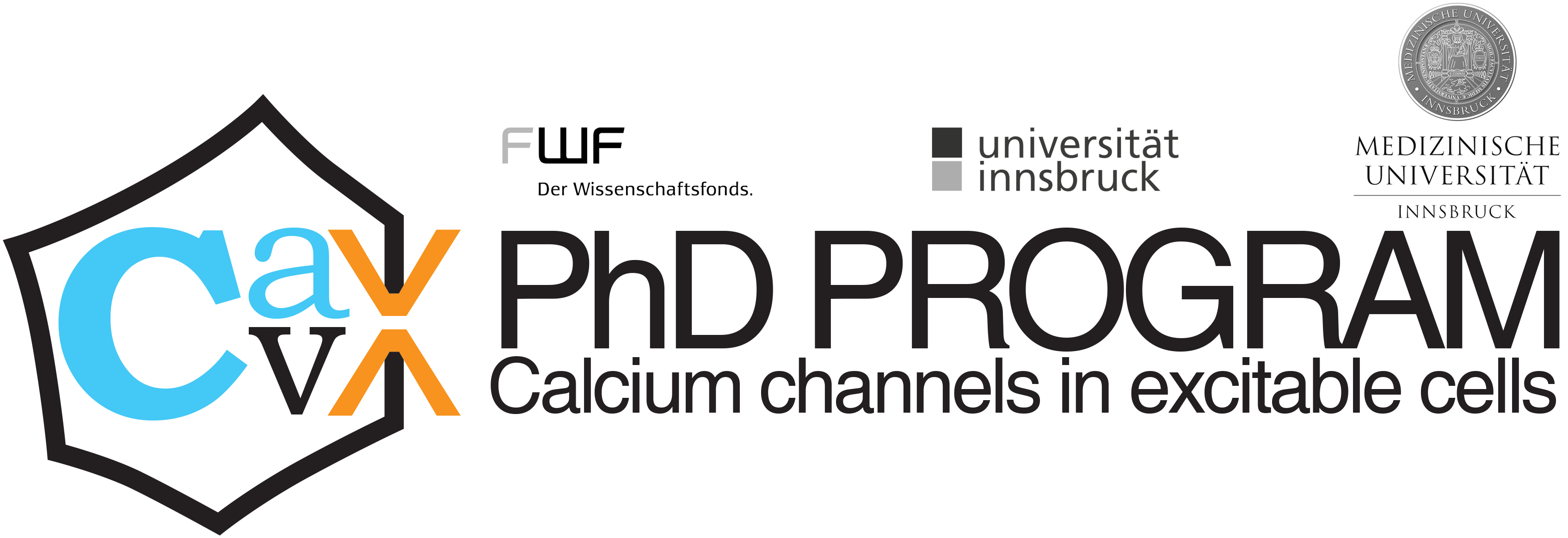// OBERMAIR GROUP
Keywords: α2δ subunits, voltage-gated calcium channels, synapse formation, neurological diseases, high-resolution immunofluorescent microscopy, electrophysiology
// AIM
α2δ subunits are abundantly expressed in the brain and serve as regulatory subunits of voltage-gated calcium channels. In our research, we aim to address whether individual subunits are responsible for specific cellular functions. In the light of their involvement in a variety of neurological diseases, we are particularly interested in how these proteins regulate synapse formation and differentiation as well as synaptic transmission. This will ultimately help to understand their contribution to brain functions as e.g. learning or memory formation and provide insight to mechanisms underlying neurological disorders such as autism, schizophrenia, epilepsy, and Parkinson’s disease.
// APPROACH
We use primary neuronal cultures and high-resolution immunofluorescent microscopy techniques in order to observe single synapses. This allows us to use neurons as a homologous expression system for different α2δ subunits and α2δ splice variants and to characterize their effects on subcellular targeting (Clemens), synaptic wiring, and aberrant pre- or postsynaptic protein expressions or mismatched synapse formation (Steffi). Moreover, in our lab we breed different α2δ KO mouse strains to analyze the differential effects of each α2δ isoform (Clemens, Steffi) and use quantitative real time PCR analysis to determine isoform or splice variant expression patterns (Bettina, Cornelia). Furthermore, crossbreeding these mice enables us to observe the synaptogenic potential of different proteins in our α2δ triple KO neuronal system, that shows a sever defect in glutamatergic synapse formation (Clemens, Cornelia). Combining this with electrophysiological recordings (Ruslan) and calcium measurements (Benedikt, Clemens, Cornelia) provides insight into functional differences between distinct α2δ subunits. Our next aim is to establish and characterize an α2δ KO mouse model as a model to study autism spectrum disorders on a behavioral (Cornelia in collaboration with Singewald group), morphological (neuroanatomical analysis Cornelia and TEM in collaboration with Missler group) and functional level (electrophysiology Ruslan and presynaptic calcium imaging Cornelia).
// CURRENT RESEARCH
Calcium is an important second messenger which, particularly in nerve cells, is required for regulating neuronal functions as neurotransmitter release, gene regulation, and synaptic plasticity. α2δ subunits are membrane anchored extracellular glycoproteins that are abundantly expressed in the brain (Schlick et al., 2010) and serve as regulatory subunits of voltage-gated calcium channels. Independently from their role as calcium channel subunits, α2δ proteins regulate pre- and postsynaptic functions and the human genes (CACNA2D1–4) encoding for the four known α2δ proteins (isoforms α2δ-1 to α2δ-4) have been linked to a large variety of neurological and neuropsychiatric disorders (Ablinger et al., 2020). Presynaptic α2δ subunits are essential for the formation and differentiation of glutamatergic synapses (Schöpf et al., 2019) and the deviant expression of α2δ isoforms can account for alterations in synaptic wiring and the formation of mismatched synapses (Geisler et al., 2019). However, neither the functional redundancy between different isoforms nor their neuron- and synapse-type specificity or channel dependent or independent functions are resolved. As α2δ proteins are critical neuronal signaling proteins involved in a variety of cellular and synaptic mechanisms, altered function may cause or mediate neurological disorders.
Therefore, we are currently studying their specific neuronal roles to understand the pathophysiology of associated disorders. Particularly using an α2δ KO mouse model we currently establish a model to study autism spectrum disorders (behavioral testing). Furthermore, we analyze affects on synaptic connectivity (hippocampal cultures and histology in sections, high-resolution microscopy and TEM analysis), neuronal excitability (presynaptic calcium imaging, electrophysiology and slice electrophysiology), and differential neural circuits (immediate early gene mapping) which ultimately may open the way for the development of novel therapeutics.
// LAB MEMBERS
- Group leader and speaker of the program: Gerald Obermair (Medical University, Karl Landsteiner)
- Senior postdoc: Ruslan Stanika
- Doctoral candidates:
- Elahe Askarzadmohassel
- Sabrin Haddad
// ALUMNI
-
- Cornelia Ablinger
- Bettina Schlick
- Benedikt Nimmervoll
- Clemens Schöpf
- Stefanie Geisle
// EXTERNAL COLLABORATIONS
- Doctoral candidate: Rosalie Dittrich
- a.o. Univ. – Prof. Mag. pharm. Dr. rer. nat. Nicolas Singewald (University of Innsbruck)
- Infektiologie und Immunologie, Medizinische Universität Innsbruck
- Institute of Anatomy and Molecular Neurobiology, WWU Münster
// ADDRESS
Division of Physiology,
Department Physiology and Medical Physics
Medical University of Innsbruck
Schöpfstrasse 41
A-6020 Innsbruck, Austria
Department Pharmacology, Physiology and Microbiology,
Institute of Physiology
Karl Landsteiner University of Health Sciences
Dr.-Karl-Dorrek_Strasse 30
A-3500 Krems an der Donau, Austria
// SELECTED PUBLICATIONS
Ablinger C, Geisler SM, Stanika RI, Klein CT, Obermair GJ. Neuronal α2δ proteins and brain disorders. Pflugers Arch. 2020;472(7):845-863. doi:10.1007/s00424-020-02420-2
Geisler S, Schöpf CL, Stanika R, et al. Presynaptic α2δ-2 Calcium Channel Subunits Regulate Postsynaptic GABAA Receptor Abundance and Axonal Wiring. J Neurosci. 2019;39(14):2581-2605. doi:10.1523/JNEUROSCI.2234-18.2019
Schöpf CL, Geisler S, Stanika RI, Campiglio M, Kaufmann WA, Nimmervoll B, Schlick B, Shigemoto R, Obermair GJ. Presynaptic α2δ subunits are key organizers of glutamatergic synapses. bioRxiv 826016; doi: https://doi.org/10.1101/826016
Stanika R, Campiglio M, Pinggera A, et al. Splice variants of the CaV1.3 L-type calcium channel regulate dendritic spine morphology. Sci Rep. 2016;6:34528. Published 2016 Oct 6. doi:10.1038/srep34528
Full publication list (Pubmed search)
// FUNDING


![]()
